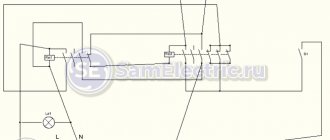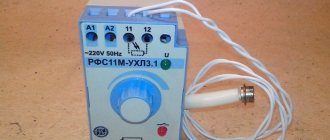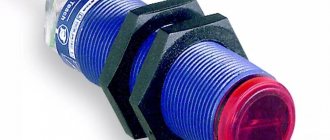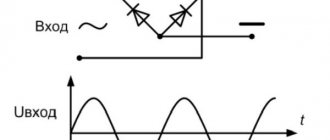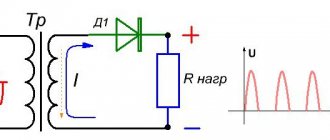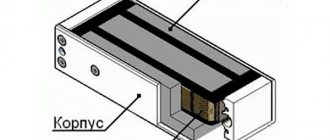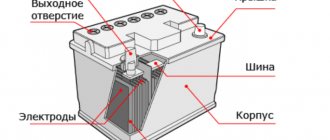The use of timers allows you to program the operation of household appliances for various periods of time. We can talk about boilers, kettles, air conditioners and many others. When choosing a suitable time relay, you need to understand what characteristics you need to pay attention to and know how to find a model that is best suited to specific operating conditions.
Some keyboard devices are capable of controlling several devices simultaneously Source sovet-ingenera.com
What are timers?
They provide certain signals to various devices at precisely specified times. The nature of household appliances or industrial equipment in the implementation of control is not decisive.
A switch with a shutdown timer can operate for short periods of time or be controlled over a period of days, weeks or months. The technician must ensure proper electrical connections. When programming, you need to set the time when the signal should be given.
Sometimes such time relays have additional useful properties. For example, a timer for a kettle or coffee maker may be located in the same housing as the socket. Thus, the owner can easily immediately set the temporary parameters of the device.
Electronic devices use a display and several keys Source sovet-ingenera.com
What to look for when choosing
Before you start choosing an outlet with a timer, you need to decide whether it is needed at all, and if it is needed, then in what capacity and for what purposes. This is due to the fact that the degree of process automation and, accordingly, the type of timer depend on the purpose. When choosing an outlet with a timer, the main criteria are indicators such as:
- Electrical power - this indicator determines how much power the load can be connected to a specific device model, and, accordingly, how much current can flow through the timer for a long time.
- Degree of protection – determines the possibility of placement in a particular place (indoors or outdoors, in damp or dusty rooms).
- Cyclic operation and settings parameters determine the possibilities of use in automatic mode and the functionality of the device.
- The manufacturer's brand determines the reliability of the device.
Three-line device model with extension cord
What are they used for?
The use of time relays is common in domestic conditions. For example, when operating an air conditioner, actions may be required that are carried out cyclically at certain intervals. For example, cooling or heating (depending on weather conditions), which are performed with an hour break.
The switch will help you warm up your food before dinner. If the owner leaves the house for some time during the cold season, it is better for him to turn off the heating. But if he only does this for a couple of days, he can arrange for it to be turned on periodically with minimal parameters.
Socket type timer Source sovet-ingenera.com
How to set up an outlet with a timer?
Mechanical timer
Mechanical control implies the presence of a drum, which has markings that allow you to set time intervals with a certain cyclicity. As an example, let's take a pool filtration pump, which can run every two hours for 15 minutes or at other specified intervals.
Also, models with mechanical control allow you to save electricity at a time when the maximum tariff is provided for it. For example, from 8 to 11 am and, accordingly, at the same time in the evening. This cycle is configured in daily sockets.
There is absolutely nothing complicated in setting up the mechanics; everything is so simple that any half-literate person who can calculate the number of hours in a day can figure it out.
Electronic timer
A more complex device that requires preliminary drawing up of a weekly schedule, and then carefully setting all parameters using electronic control. An LED or LCD screen will greatly simplify setup and will indicate the progress of the process.
Typically, the minimum control set includes the following functional buttons: left, right, up, down, activation, delete from memory, countdown and reset settings. They help create the necessary time intervals throughout the week or specific days.
There are more sequential actions with a certain course, which you need to think through in advance and spend enough time on entering them. In general, of course, it’s more difficult than with mechanics, but if you can handle it with a smartphone, then you won’t have any problems with the setup either.
Features of the timer
The use of a time relay will not only help to rationally control household appliances, but will also save energy. For example, it is possible to use a switch with a time delay. A high-quality device must have the following characteristics:
- It is necessary that the timer operates for a period of time sufficient to complete the planned tasks. The relay can, for example, be used to control a kettle for the next hour or over several weeks to regulate the operation of a heating boiler.
- All necessary control functions must be provided to ensure full operation of the equipment.
- High accuracy of the built-in clock is required. When a signal is given, there should not be a time difference between the receipt of the command and the activation of those relays that provide activation or deactivation of the corresponding equipment.
- The timer must have sufficient discreteness to accurately carry out the programmed actions.
This instrument is a complex electronic device that can be programmed by the user for various purposes.
Electromechanical timer Source sovet-ingenera.com
Functions of electronic timers
- Timer – input and confirmation of data when programming for 12 and 24 hours
- Hour, minute – together with the Timer key, the required time is set
- Week – programming of weekly work.
- Rst/Rcl – cleaning and restoring the program.
To create the impression of the owner’s presence in the house, the vast majority of models of electric timers have the Random function. It randomly turns on the outlet for time intervals from two to thirty minutes.
This mode is interesting because electrical appliances are turned on without reference to any specific time. In theory, such an effect should confuse burglars watching a house or apartment.
Some models have the function of storing separate programs for different days of the week. The timer model TM-22 from Feron is equipped with this function.
Types of devices
Mechanical timers have a dial with petals arranged in a circle. Each of them corresponds to a certain time. The resolution is 15 or 30 minutes. By combining pressed or released paddles, you can set when the equipment will be turned on and when not. There are also brands whose controls are based on rotating a special wheel and using several levers. One simple option is a time delay switch.
The main advantage of the device is its simple design. Low discreteness and the lack of ability to implement complex algorithms limit the use of this device.
The video will help you understand how to choose a time relay:
Types of socket timers
These devices are similar in design to adapters, which combine a timer and a socket. To be powered by electricity from a stationary source, there is a plug connector inside the device body. To connect the plug into the housing, the device was equipped with a power socket.
Mechanical timer
The type of timer is determined by parameters such as: wire type, adjustable range and method of setting the time interval. The last feature divides them into digital and mechanical.
Video description
How to choose a timer, time relay, their types and operating principle.
The basis for timing is the operation of the built-in motor. These sleep timers must have a power source to operate. With regular use, the gears of the wheel used to make time settings can quickly wear out.
Timer with on-delay Source sovet-ingenera.com
Popular models
- REV Ritter 25010 . Has 48 on-off intervals (minimum 30 minutes). Designed for work in unheated rooms. Withstands a load current of 16 amperes. Price from 350 to 450 rubles.
- TIME CONTROL III mechanical (daily) socket timer. Designed for 96 on-off intervals (minimum 15 minutes). There is protection against children. Load current 16 amperes. Price from 250 to 350 rubles.
- Feron TM50 . Device with a 15-minute minimum turn-on/off interval. Load current 16 amperes. Costs from 400 to 550 rubles.
Video description
Mechanical timer for turning on and off the lighting in the aquarium.
In the first case, problems may arise if there is a power failure. However, such timers can work for a very long time without requiring special attention. Devices that use a battery have a significant degree of autonomy, but operate for a limited time until the charge runs out.
Programmable timer for controlling household appliances Source 220.guru
For each such device, in practice, a certain operating mode is established. It is important that the one that the owner needs is provided for this device. The most common are the following:
- A universal timer allows you to plan work algorithms within a wide range.
- Random switching may be used.
- Countdown time is applied.
- An astronomical countdown is underway.
- Using weekly rhythms. For example, if you need to regularly perform actions on certain days of the week.
- Actions based on circadian rhythms.
Setting rules
There are two types of settings: daily and weekly. For mechanical timers, only the first option is relevant.
The second method is carried out in this way: before turning on the device for the first time, you need to charge it from the mains for 14 hours. After this you need to follow the algorithm:
- You need to reset to factory settings. To do this, use a thin needle to press the master clear button.
- Then you need to press timer and on1 will appear on the display.
- Next you need to select week and designate the days of the week. The hour should be set using the hour and min buttons.
- You can switch to manual and automatic mode using the on/auto/off functions.
Next, you need to press the timer button and off 1 will appear on the display. To set the period for disconnecting the device from power, follow the algorithm described above.
It is possible to program another on/off block. To do this you need to go through the entire algorithm. To check the settings, press timer and hold the button. Exit programming by pressing the clock button.
A mechanical timer socket is an example of a timer that must operate on a daily basis. The device is equipped with a dial, which allows you to set several working periods.
The setup procedure is as follows:
- To determine the periods when the device is turned on, you need to press the segments next to the numbers. You can select automatic mode using the Manual button.
- Next, you need to connect the device to the network. In order to program equipment shutdown, perform similar actions.
The impeller should only be rotated clockwise. If this condition is not met, the device will fail. However, repairs rarely lead to a positive result.
How to choose the right model
The timer must be suitable for the tasks for which it is purchased. When exploring these options, consider the following:
- What supply voltage is the product designed for?
- Type of control when determining the operating algorithm of the device. You can choose a mechanical or electronic option.
- The purchased time relay provides a certain installation option. It can be socket, using a junction box or another. You need to choose the one that is suitable for the application.
- It is necessary to take into account the degree of security of the device. In some cases, for example, devices that are waterproof may be required.
- You need to pay attention to the length of the period during which you can program the timer.
If we are talking about an option that uses mains power, then it needs to be insensitive to voltage failures. These devices can provide a wide variety of functions. You need to make sure that among them there are those that are needed.
Socket with remote control Source kupisantehniki.ru
Main functions, advantages and disadvantages of devices
Electrical, electromechanical and mechanical automatic relays are used to control indoor lighting as well as electrical appliances. Compared to a standard manual switch, installing an automatic switch has the following advantages:
- Significant energy savings. Maintaining the optimal temperature and lighting level in the room, for example, shortly before household members return home, the heater or air conditioner can turn on to create comfortable conditions.
- The built-in program allows you to monitor the lighting in the garden and yard without leaving your home. Lights and electrical appliances will turn on and off at strictly set times, even if there are no people nearby.
- Automatic shutdown of household appliances shortly after a person leaves home. The device is often installed in washing machines and electric stoves, since even the simplest mechanical timers are suitable for them.
Another advantage of the devices is their low cost. High-quality timers save time for household members and make staying at home even more comfortable.
Unimplemented API calls
Nucleus SE does not implement three API calls that can be found in RTOS.
Creating a timer
This API call creates a timer.
In Nucleus SE this is not necessary since timers are created statically. Service call prototype: STATUS NU_Create_Timer(NU_TIMER *timer, CHAR *name, VOID (*expiration_routine)(UNSIGNED), UNSIGNED id, UNSIGNED initial_time, UNSIGNED reschedule_time, OPTION enable);
Parameters: timer
– pointer to a user-supplied timer control unit;
it will be used to manage timers in other API calls; name
– pointer to the 7-character name of the timer, terminated with a zero;
expiration_routine
– specifies a function that should be executed after the timer ends;
id
UNSIGNED
data element passed to the termination function: this parameter can be used to identify timers with the same termination function;
initial_time
– indicates the initial number of timer ticks before the timer ends;
reschedule_time
– indicates the number of timer ticks until the end of the second and subsequent cycles;
if this parameter is zero, the timer stops only once; enable
– this parameter can take the values
NU_ENABLE_TIMER
and
NU_DISABLE_TIMER
;
NU_ENABLE_TIMER
enables the timer after it is created;
NU_DISABLE_TIMER
leaves the timer disabled;
timers created with the NU_DISABLE_TIMER
must be enabled by calling
NU_Control_Timer
.
Return value: NU_SUCCESS
– the call was completed successfully;
NU_INVALID_TIMER
– a null pointer to a timer control block (
NULL
), or the control block is already in use;
NU_INVALID_FUNCTION
– null pointer to the termination program (
NULL
);
NU_INVALID_ENABLE
– incorrect
enable
;
NU_INVALID_OPERATION
– the
initial_time
was equal to zero.
Deleting a timer
This API call deletes the previously created timer.
In Nucleus SE this is not necessary since timers are created statically and cannot be deleted. Service call prototype: STATUS NU_Delete_Timer(NU_TIMER *timer);
Parameters: timer
– pointer to the timer control unit.
Return value: NU_SUCCESS
– the call was completed successfully;
NU_INVALID_TIMER
– incorrect pointer to a timer;
NU_NOT_DISABLED
– the specified timer is not disabled.
Pointers to timers
This API call generates a sequential list of pointers to all timers in the system.
In Nucleus SE this is not necessary since timers are defined by a simple index rather than a pointer. Service call prototype: UNSIGNED NU_Timer_Pointers(NU_TIMER **pointer_list, UNSIGNED maximum_pointers);
Parameters: pointer_list
– pointer to an array of pointers
NU_TIMER
;
it will be filled with pointers to timers configured in the system; maximum_pointers
– maximum number of pointers in the array.
Return value: Number of NU_TIMER
, placed in an array.
Timer Plus
This application is designed for sports lovers. Timer Plus allows you to effectively alternate between training and rest. The app includes a Tabata timer, a round timer for CrossFit, and a stopwatch for runners. Plus, there's nothing stopping you from creating your own time counters if you follow a custom workout program.
Timer Plus has a very bright, contrasting interface, which makes it easier to monitor the passage of minutes without looking at the gadget screen for a long time. In addition, in the application settings you can find several options that allow you to interact with the timer without picking up your smartphone.
For example, Timer Plus can flash the flash or screen of the device, warning you about the end of the next round, and also notify you by voice.
Why does an ordinary person need a timer?
An ordinary person does not bother himself with searching for tools for personal effectiveness. He considers them more like tools for work. Or rather, even for the boss. A way of squeezing juice out of employees, exploiting man by man.
Anyone who bothers with such things often seems strange. In other people's eyes, he looks more like a robot than a person. Savagery and fanaticism. And most importantly, an incomprehensible desire to strain oneself in the area that, in theory, should be a place of relaxation.
Perhaps you think so too, and I understand you. For a long time I could not understand how one could voluntarily control one’s creative nature. But life gave me the opportunity to try. And do you know what it turned out to be?
Firstly, it is useful and not at all scary. Secondly, these are just tools that help us achieve what we want faster and can be put aside at any time as soon as their use no longer serves our goals. This means that freedom remains in place.
But let's take things in order. If you don’t know why you need a timer, answer the following questions:
1. Do you sometimes find it difficult to do something that you should have done yesterday or even the year before? And you endlessly procrastinate?
2. Does it happen that, after looking at social networks or popular sites for a minute, you “wake up” a few hours later? But they honestly wanted to do something useful.
3. Does it happen to you that you become so immersed in something (maybe even with pleasure) and earn so much money that for a long time afterwards you cannot even think about taking it up again, because you have “overeaten”?
4. Does it happen that you had a lot of plans for the day, but you didn’t have time to do something very important to you?
If none of the above happens to you, you don’t have to read any further - you can probably teach me something yourself. And if you recognize yourself and, most importantly, want to change the situation, let's see what can be done.
There are several myths regarding the use of personal effectiveness methods. One of them is “This is not for me. All these methods were invented for cool super-people with large-scale tasks to manage international businesses. And I am a simple person."
Yeah! This is true. Just exactly the opposite. In order to become a bigger person, it is very useful to use time management techniques. These are exactly the tools that will allow anyone to reach a new higher standard of living, regardless of where they are now.
A busy businessman needs to find time to restore his strength and maintain his health. Mother of a baby and housewife - find time to study or relax. For a creative person, teach the muse to arrive on schedule. And even if the only thing a person wants is to get more benefits from life, he can do this too.
It doesn't matter where you are now, what matters is where you want to end up.
The second most common myth goes something like this : “I can’t live by an alarm clock, I need freedom . People think that if we start using timekeeping (what a scary word!), then we no longer belong to ourselves. But the truth is, as I said above, it's just a tool. Surely you don't carry a hammer around with you if you need to hammer a nail from time to time? Don't carry a sewing machine with you? Or an iron? Just take it out and use it as needed.
It’s the same with personal effectiveness tools.
Once upon a time they seemed like scary beasts to me, but today I not only use them almost constantly, but even find pleasure in it. Now I’ll tell you why.
What can you use a timer for in everyday life?
1. Firstly, to combat perfectionism . Women I know suffer from excellent student syndrome quite often. And this is one of the reasons that there is not enough time - we spend too much of it on something that is already good enough.
There is a rule that work takes exactly as much time as is allotted for it. That is, the task itself, in most cases, does not take very much time. The rest is spent either on distractions or on endless “polishing”.
If you have a desire to make everything perfect, chances are you're wasting your time. Sometimes a job really needs to be done flawlessly. But more often than not, our extra efforts go unnoticed.
Once upon a time, the concept of “ good enough ” turned out to be important for me. Every task has a moment when it has already been done well enough (although not perfectly). The 80/20 rule applies here (20% of the time is spent doing 80% of the work and 80% of the time finishing the remaining 20%). It is at this moment that it would be good to stop. The question is how to understand?
To do this, it is useful to set a certain deadline - a control time, after which you can simply leave the task in the same state as it turned out. Setting boundaries on your own and sticking to them is not always easy. But you can use external frames. Those who have taken a test at a university at least once will understand what I'm talking about.

